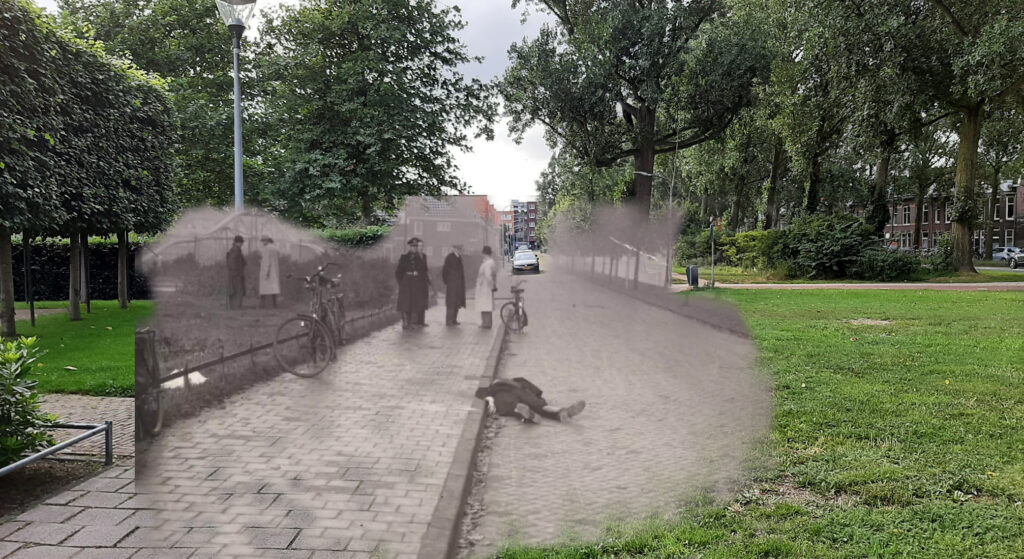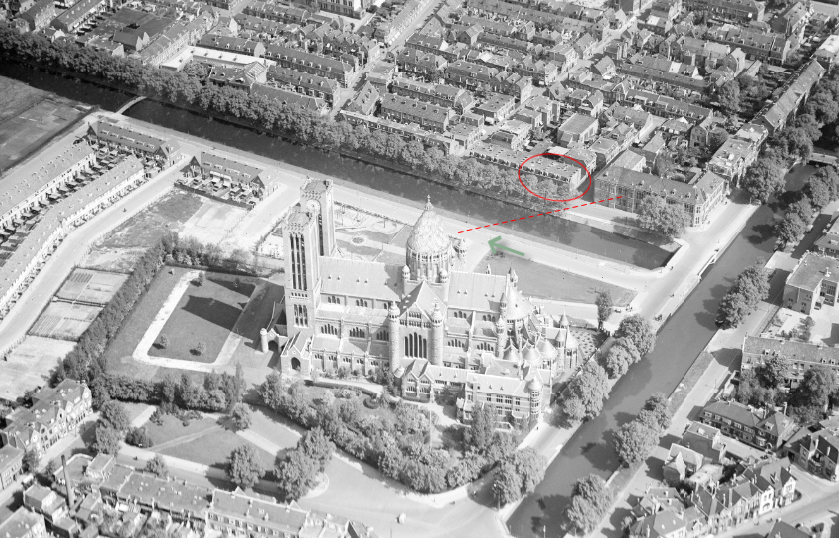Haarlem – the assault on Fake Krist
The Haarlem resistance killed policeman and NSB member Fake Krist on October 25, 1945. The consequences of this assassination had a major impact on the history of Haarlem during the second world war. Fake Krist was one of the most notorious employees of the German Sicherheidsdienst, specialized in tracing Jews in hiding. In September 1944, the leadership of the resistance in Haarlem decided that this dangerous traitor should be killed. Three attempts failed so a fourth was set up…

The Assault by the Haarlem resistance
In the early morning of 25 October 1944, three men forced their way into the Bavoschool, which is located on the other side of the corner of the Westegracht in Haarlem. They went to the gym on the first floor and waited. They had gathered Information and knew by now that Krist cycled to his boarding house on a daily bases. To have a clear shot they had smashed a window in order to fire across the street. Quite unexpectedly, the school janitor suddenly entered the room. The three men warned him not to sound an alarm and tied him up just to be safe. After a while the signal came that Fake was approaching on his bike. Gommert Krijger, alias Zwarte Kees, who was the ‘sniper on the carbine’, fired the deadly shots. Krist fell off his bike and died within seconds. Below the picture of the situation.

By coincidence Hannie Schaft and Truus Oversteegen where also present on the Westergracht as they also had plans to to commit an attack on Krist. However the other resistance group was ahead of them. Schaft and Oversteegen can flee just in time, just like the other resistance men.
After
The Germans retaliated the attack on Fake Krist by first selecting ten men from the prison on the Weteringschans in Amsterdam and bringing them to Haarlem. Secondly they executed the ten men in public at the park behind the Cathedral Basilica of St. Bavo. In addition the Germans also set fire in a block of four houses on the Westergracht.
Today there is a monument with the names of the executed men in the park. On the other side are clearly visible the 4 new houses on the block. The attack and the events that followed created a scar that is visible and tangible in Haarlem to this day. Harry Mulish, a well-known writer, used this event as the basis for his best-selling novel ‘De Aanslag’ (The Assault)



